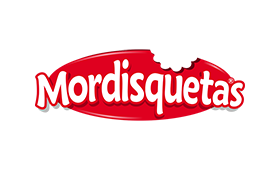Understanding Home Microneedling Hygiene Basics
Microneedling at home can be effective, but maintaining hygiene is crucial to prevent infections. Start by choosing a quality dermaroller with sterilized needles. Always sanitize the tool before and after use with rubbing alcohol. Clean your face thoroughly to remove any dirt and makeup. Avoid sharing your microneedling device with others to reduce bacterial exposure. Opt for a gentle cleanser post-procedure to soothe the skin. Avoid using abrasive products that might irritate. Store your microneedling device in a clean, dry place. Replace the dermaroller as recommended to keep the needles sharp and safe. If you notice any persistent redness or irritation, consult a dermatologist for advice. Adhering to these practices helps ensure a safe microneedling experience at home.
Essential Tools for Safe Microneedling at Home
Microneedling at home requires careful attention to safety. First, choose a derma roller with needles no longer than 0.5mm to minimize injury risk. Sanitize the roller before and after use with isopropyl alcohol to prevent infection. Use a gentle cleanser on your skin before the procedure to remove dirt and oils. Apply a numbing cream if you have sensitive skin, but ensure it’s fully absorbed before starting. After microneedling, apply a hydrating serum with hyaluronic acid to support healing. Avoid sun exposure and use a broad-spectrum SPF to protect the newly treated skin. Regularly check the condition of your equipment and replace it if the needles become dull or damaged. Following these steps can help maintain skin health while reducing potential side effects.
Proper Cleaning Techniques for Microneedling Devices
Cleaning your microneedling device is crucial to ensure safety and prevent skin infections. Start by washing your hands thoroughly to avoid transferring bacteria. Next, rinse the device with warm water to remove any debris. Use a 70% isopropyl alcohol solution to disinfect the needles. Dip a clean cloth in the alcohol and gently wipe the device, ensuring all areas are covered. Allow it to air dry on a clean, lint-free towel. Do not share your is it safe to microneedle at home tool with others to minimize the risk of cross-contamination. Regularly inspect your device for any signs of wear or damage. Replace worn-out needles promptly to maintain effectiveness and safety. Always follow the manufacturer’s instructions for specific cleaning guidelines and safe usage. By maintaining proper hygiene, you can safely perform microneedling at home while protecting your skin from potential harm.
Pre-Procedure Skin Preparation Guide
Microneedling at home can be safe if you take the right steps. Firstly, ensure your device is clean. Sterilize it with alcohol before use. Clean your face thoroughly, removing any makeup and dirt. Use a gentle cleanser to prevent irritation. Avoid exfoliating products like acids or retinoids for at least 24 hours before the procedure. These can increase sensitivity and risk of irritation. It’s important to use a new needle each time to avoid infection. A numbing cream can help reduce discomfort if needed. Ensure your skin is dry before rolling the device. Be cautious with pressure to prevent damage. Avoid microneedling over active acne or inflamed areas as this can worsen the condition. After the procedure, apply a soothing serum to aid in recovery. Follow these guidelines for a safer microneedling experience at home.
Post-Procedure Care: Avoiding Infections
Microneedling at home can be safe if you adhere to strict hygiene practices. First, always ensure your tools are sterile before use. Clean your derma roller with isopropyl alcohol to prevent bacteria buildup. During the microneedling process, maintain a clean environment to avoid contaminants. Post-procedure, apply an antiseptic solution to your skin to reduce infection risks. Avoid touching your face with unclean hands, as this can introduce harmful bacteria. It’s crucial to keep your skin moisturized with a non-comedogenic product to aid healing. Also, steer clear of makeup for at least 24 hours to prevent skin irritation. If your skin shows signs of infection, such as redness or swelling, consult a healthcare professional promptly. Consistent adherence to these practices helps in minimizing infection risks, ensuring a safe microneedling experience at home.
When to Seek Professional Microneedling Help
Microneedling at home can be tempting with readily available kits. However, there are situations when professional guidance is crucial. If you have sensitive skin, it’s wise to consult a dermatologist before starting. They can assess your skin’s condition and recommend the right approach. Individuals with active acne or rosacea should avoid home treatments as they may worsen the situation. In such cases, professional help ensures a safer procedure. If you notice any unusual skin reactions after microneedling, it’s time to seek expert advice. Professionals can provide targeted treatments to prevent further damage. Additionally, those prone to keloid scarring should avoid self-treatment. Experts have the necessary tools and techniques for minimizing risks. It’s also important to consider hygiene. Professionals maintain a sterile environment, reducing infection risks. If you’re unsure about your skin type or have any concerns, consulting a specialist is always the best option for safe and effective microneedling results.






















